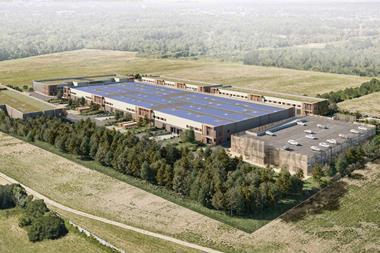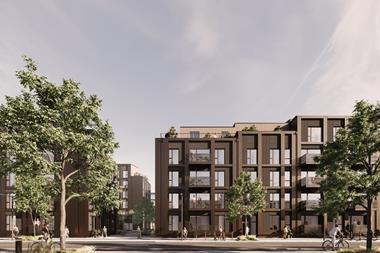Kate Medlicott suggests some top city destinations for this summer in the eclectic world of European commercial real estate
Europe's commercial real estate markets are extremely varied, each sitting at different stages in the market cycle. Last year yields converged across Europe. Buyers substantially outnumbered sellers, and investors were increasingly willing to take on more risk for less and less return. As we turn the corner into the second half of 2007, we take a look at the European commercial property markets and ask where investors should be focusing their priorities over the next 12 months.
The eurozone economy has finally perked up. In 2006, gross domestic product (GDP) grew by 3% - the fastest rate of expansion so far this decade. Growth was broad-based across regions, and, generally speaking, underpinned by strong export demand and an acceleration in business investment spending.
The outlook for Europe in 2007 remains upbeat. We expect some moderation in growth as the region faces a less supportive global environment and tighter monetary policy restrains investment spending. Nevertheless, while strong demand for exports has provided a boost to the cyclical European recovery, there are encouraging signs that growth within the region is becoming more balanced.
In particular, consumer spending is expected to become a more important driver as improvements within eurozone labour markets place upward pressure on wages. Recent data show that eurozone consumers shrugged off sluggish consumer spending growth in Germany during the first quarter of 2007 (where consumers are adjusting to the January VAT hike) to record overall buoyant retail sales growth. Rising employment across the region is boosting consumer confidence and spending is expected to remain strong throughout the remainder of the year.
But there are risks. The ECB retains a clear tightening bias in the face of above trend GDP growth and double-digit money supply (M3) growth. The European Central Bank's recent assertion that monetary policy was "still on the accommodative side", indicates that interest rates will reach at least 4.25% by mid-year. Higher interest rates will increase the cost of borrowing - particularly for highly leveraged investments. This is likely to put upward pressure on yields. Going forward, pressure for further interest rate rises will be tempered by a slowing external environment.
Strong rates of economic growth in Europe will support occupier markets. In the office sector - where most markets experienced growing levels of take-up over the past 12 months - the outlook is positive, and demand for space is expected to strengthen. Occupier markets were weak in most eurozone economies until 2004-05.
A corollary of strong occupier demand is rental growth. Rents generally bottomed out in 2003 in most markets. However, in the past few years there has been a welcome uplift in the average rate of rental growth in Europe. This trend looks set to continue. While rents will grow more slowly after 2006, the rate of growth is expected to remain fairly stable in the lead-up to the end of the decade.
At the same time, the proportion of markets experiencing rental growth is increasing. As figure 2 shows, the majority of European markets are expected to see either stable or positive rental growth in 2007. This compares with 2003, when rents fell across most markets.
Falling availability levels (see figure 3) across most markets will boost rental growth prospects. Rental growth will be spurred on by falling availability. Falling availability is the net result of demand for space rising more quickly than supply. The availability ratio across Europe is expected to fall from an average of 9% in 2006 to 8% by 2011. This is a significant improvement on 2004, when the average availability ratio exceeded 10%. Looking at rental growth, the strongest performers will be London and Istanbul, boosted by a lack of available space. The amount of available space as a proportion of total stock in central London has fallen from over 13% at the end of 2003 to about 5.1% at the end of the first quarter of 2007.1
Paris and Madrid are also characterised by relatively tight occupier markets. In each of these locations there is one year's - or less - worth of supply available on the market, and the majority of this is of poor quality or location. With demand outweighing supply, these markets are expected to see strong rental growth between 2007 and 2011.
Elsewhere, in Frankfurt and Amsterdam, where the availability ratio remains high, at 17% and 20% respectively, rental growth is likely to be more subdued.
In line with strong economic growth, occupier demand for space in central and eastern Europe (CEE) is rising. Most demand stems from international companies that are opening their first offices in the region. These occupiers bring new requirements to the marketplace. Consequently, there has been a shift in demand from smaller second-hand units to modern buildings with large floorplates. This means that supply often does not match demand and the vacancy rate remains relatively high in some markets. Nonetheless, levels of demand will continue to rise and rents will increase in most markets.
Last year proved to be a strong year for retail in terms of rental growth - a welcome change following a period of sluggish consumer spending that was felt across most European retail markets. In particular, Germany and the UK have borne the brunt of subdued consumer sentiment in the past few years and, as a result, slightly slower rental growth is expected in these markets. In fact, the forecast average rate of retail rental growth in London's West End between 2007 and 2011 is one of the lowest of the main European markets.
The outlook for Germany is more bullish. Germany's economic resurgence will feed through to higher consumer spending. Demand is likely to increase, which will, in turn have a favourable impact on rents. In Berlin, the replacement of out-dated retail concepts with more modern counterparts is expected to generate increased international retailer interest. This will inject a much-needed boost to the market, following a couple of years of stable or falling rents.
Many investors continue to favour retail as their asset of choice, especially in CEE. Prague and Budapest have seen exceptional rental growth in the past five years. These are strong growth markets, where the sharp increase in consumer spending - underpinned by wage growth - has boosted the rapid development of their retail sectors. Unlike in western European markets, where the development of the out-of-town sector has been gradual, these markets have experienced an uninterrupted growth spurt - straight from antiquated retail formats to large out-of-town shopping centres and retail parks. This has been matched by an influx of foreign investors. These markets are now maturing, and rental growth is expected to become more subdued.
The Nordic region is also in a strong position for growth, driven by strong consumer spending. Elsewhere in Europe, we expect rental growth to soften in the next few years as international retailer demand is gradually realised, before picking up from 2009 onwards.
In recent years, the industrial sector has been weak in most European countries. However, the market witnessed a turnaround in 2005 and 2006. In particular, major seaports and airports have seen high levels of take-up in line with increasing trade.
In CEE, the rapid growth of the retail market has led to a fast-expanding logistics sector. As a result, there has been excess speculative development in many of these regions, which points to a risk of oversupply.
Rents have now peaked in most locations and rental growth is expected to decelerate in 2007-08 as the economy cools down. London (Heathrow), Amsterdam and Helsinki will be the strongest performers between 2007 and 2011.
Investor appetite for European property continues to escalate. In 2006, there was €192bn-worth of real estate investment transactions in Europe, compared with €136bn in 2005. Increased demand is a result of cheap financing, asset reallocation, deregulation, and a developing global real estate market. Figure 4 shows capital flows in Europe, the US and Asia Pacific from 2000 to 2006.
The net result of a lot of money pouring into a product-starved market has been considerable yield compression. Yields continued to sharpen in 2006 and early 2007, and the question many investors are asking is: "how low can they go?" Figure 5 shows prime yield movements across the main European office markets between 2002 and 2006 and forecast yields to 2011. In Moscow, yields dropped from 18% at year-end 2001 to 8.5% at the end of the first quarter of this year. Although less dramatic, the more mature markets also experienced continued yield convergence over the period, with prime yields in Frankfurt falling to 4.25% - the lowest level since 1990.
Looking ahead, we expect yields to start to move out in some markets as government bond rises and rental growth prospects become more subdued. By 2010, we expect the rate of rental growth for the 50 largest office European markets to average about 2.8% per annum.
The combination of limited yield movement and slower rental growth points to a continuing gap between the investor buy list and market fundamentals. As a result, asset selection will become increasingly important. Investor demand will focus on those locations that offer the best leasing fundamentals. These are markets that are expected to see the strongest rental growth, or that are about to enter more dynamic phases in the rental cycle, and, therefore, offer the most growth potential, such as Paris and Istanbul. Secondary locations will be the most vulnerable to rental decline - core locations will attract the majority of interest.
Investor demand shows no sign of letting up. The diversity of the investor base will continue to be a feature of the market, with cross-border activity accounting for an increasing proportion of transactions.
Higher interest rates will generally reduce the scope for further yield compression. However, the downward trend in yields across Europe is far from over. We expect industrial yields to continue to harden in 2007. In the office sector, emerging markets, such as Moscow, Kiev, Istanbul and Bucharest, are forecast to see further declines in yields.
For retail property, the yield profile is somewhat mixed. In some markets yields are expected to remain flat as a result of continued investor interest; in others, yields are likely to move out gradually in the light of less favourable economic and rental growth prospects.
The next 12 months offer a multitude of opportunities for real estate investors. The European market is becoming increasingly accessible via the introduction of investment vehicles, such as REITs, to countries where they have not existed before. At the same time, the investment universe is expanding.
The sustained downward shift in yields for conventional real estate has led many investors to seek higher returns in alternative asset classes - nursing homes, airports, car parks, self storage - and mixed-use schemes. These non-mainstream asset classes are likely to see the largest yield movements.
For conventional real estate, CEE, the Nordic region and France are top of our summer buy list.
(1)The central London market comprises several sub-markets - City, West End, mid-town, Docklands, south-east fringe and north-west fringe
Kate Medlicott is a global markets analyst at DTZ Research












